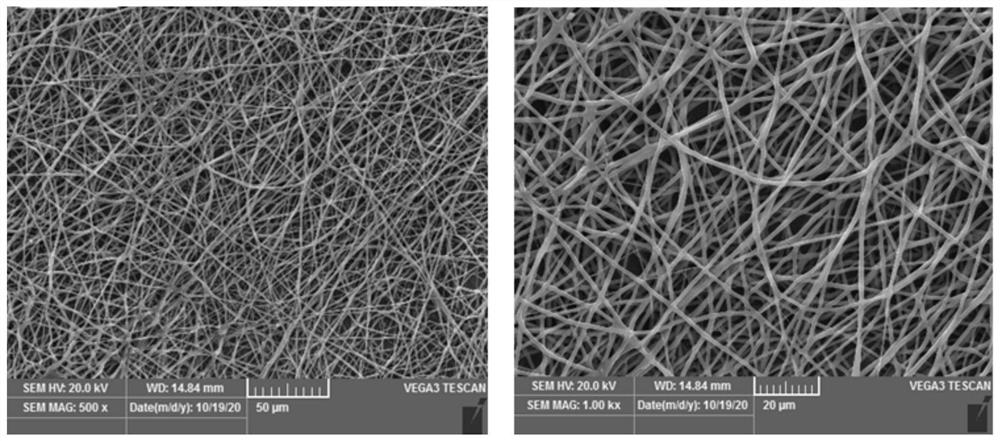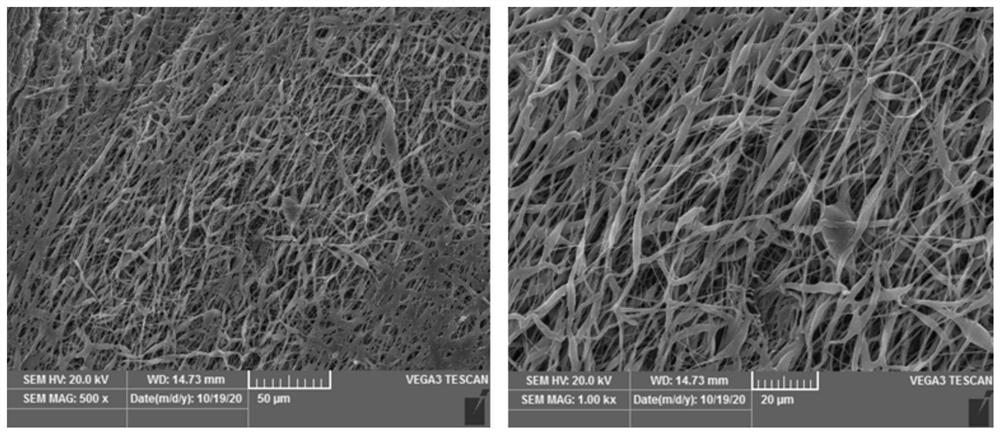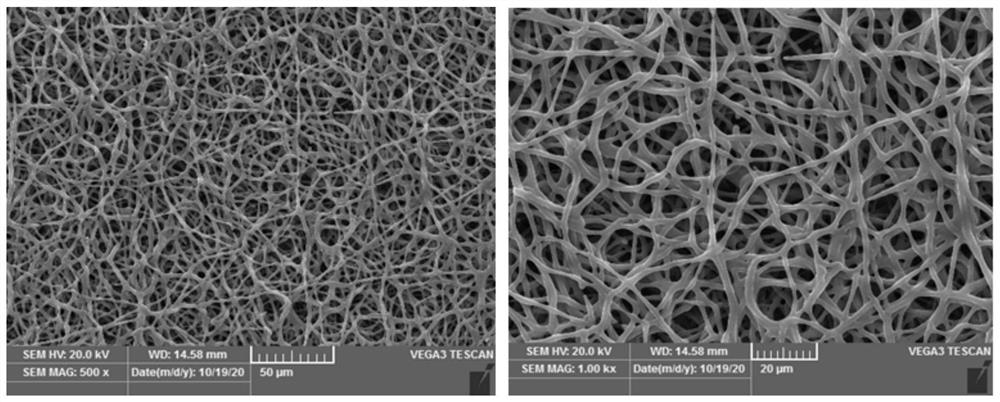Preparation method of three-dimensional composite porous scaffold and three-dimensional composite porous scaffold
A technology of three-dimensional composite and porous scaffolds, which is applied in the preparation of three-dimensional composite porous scaffolds. High, good cytocompatibility effect
- Summary
- Abstract
- Description
- Claims
- Application Information
AI Technical Summary
Problems solved by technology
Method used
Image
Examples
Embodiment 1
[0041] S1: Take dichloromethane and N,N-dimethylformamide according to the volume ratio of 4:1, and mix dichloromethane and N,N-dimethylformamide evenly to obtain an organic solvent, and then follow The mass ratio of organic solvent and polycaprolactone (PCL) and cellulose nanocrystal (CNC) mass sum is that the ratio of 16% takes PCL and CNC, and PCL and CNC are stirred and mixed with organic solvent to make it dissolve, And according to the electrospinning parameters of voltage 18kV, sample injection speed 0.8mL / h, the distance between the needle and the receiver is 20cm, and the needle is 20G, electrospinning is carried out to obtain a nanofiber membrane with a diameter of 200-600nm; , the mass ratio of adding CNC to PCL is 3:100;
[0042] S2: Mix according to the volume ratio of 1:1 to obtain a mixed solvent of absolute ethanol and deionized water, then weigh 4g of the nanofiber membrane obtained in step S1 and add it to 200mL of the mixed solvent, and mechanically stir and...
Embodiment 2
[0045] S1: Take dichloromethane and N,N-dimethylformamide according to the volume ratio of 3:2, and mix dichloromethane and N,N-dimethylformamide evenly to obtain an organic solvent, and then follow The mass ratio of organic solvent and polycaprolactone (PCL) and cellulose nanocrystal (CNC) mass sum is that the ratio of 20% takes PCL and CNC, and PCL and CNC are stirred and mixed with organic solvent to make it dissolve, And according to the electrospinning parameters of voltage 18kV, sample injection speed 0.8mL / h, distance between needle and receiver 20cm, and needle 20G, electrospinning was carried out to obtain a nanofiber membrane with a diameter of 200-600nm;
[0046] S2: Mix according to the volume ratio of 1:2 to obtain a mixed solvent of absolute ethanol and deionized water, then weigh 4g of the nanofiber membrane obtained in step S1 and add it to 200mL of the mixed solvent, and mechanically stir and break it into intermittent Accelerate the stirring, the stirring spe...
Embodiment 3
[0049] In step S1, the mass ratio of the organic solvent to the sum of the mass of PCL and CNC is 14%, and other preparation steps are basically the same as in Example 1 to obtain product C.
PUM
| Property | Measurement | Unit |
|---|---|---|
| Diameter | aaaaa | aaaaa |
Abstract
Description
Claims
Application Information
 Login to View More
Login to View More - R&D
- Intellectual Property
- Life Sciences
- Materials
- Tech Scout
- Unparalleled Data Quality
- Higher Quality Content
- 60% Fewer Hallucinations
Browse by: Latest US Patents, China's latest patents, Technical Efficacy Thesaurus, Application Domain, Technology Topic, Popular Technical Reports.
© 2025 PatSnap. All rights reserved.Legal|Privacy policy|Modern Slavery Act Transparency Statement|Sitemap|About US| Contact US: help@patsnap.com



